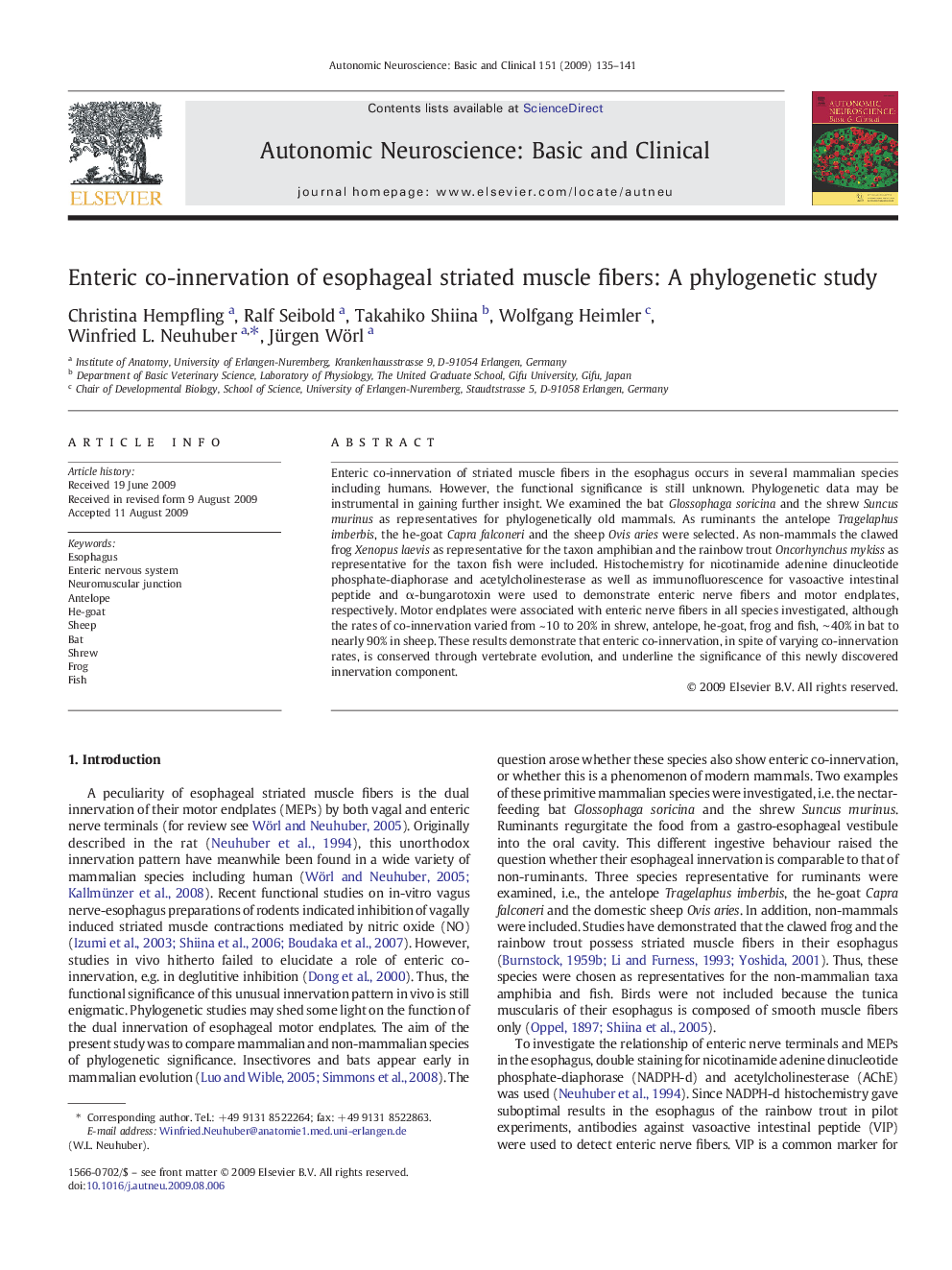| کد مقاله | کد نشریه | سال انتشار | مقاله انگلیسی | نسخه تمام متن |
|---|---|---|---|---|
| 3035249 | 1184258 | 2009 | 7 صفحه PDF | دانلود رایگان |

Enteric co-innervation of striated muscle fibers in the esophagus occurs in several mammalian species including humans. However, the functional significance is still unknown. Phylogenetic data may be instrumental in gaining further insight. We examined the bat Glossophaga soricina and the shrew Suncus murinus as representatives for phylogenetically old mammals. As ruminants the antelope Tragelaphus imberbis, the he-goat Capra falconeri and the sheep Ovis aries were selected. As non-mammals the clawed frog Xenopus laevis as representative for the taxon amphibian and the rainbow trout Oncorhynchus mykiss as representative for the taxon fish were included. Histochemistry for nicotinamide adenine dinucleotide phosphate-diaphorase and acetylcholinesterase as well as immunofluorescence for vasoactive intestinal peptide and α-bungarotoxin were used to demonstrate enteric nerve fibers and motor endplates, respectively. Motor endplates were associated with enteric nerve fibers in all species investigated, although the rates of co-innervation varied from ~ 10 to 20% in shrew, antelope, he-goat, frog and fish, ∼ 40% in bat to nearly 90% in sheep. These results demonstrate that enteric co-innervation, in spite of varying co-innervation rates, is conserved through vertebrate evolution, and underline the significance of this newly discovered innervation component.
Journal: Autonomic Neuroscience - Volume 151, Issue 2, 3 December 2009, Pages 135–141